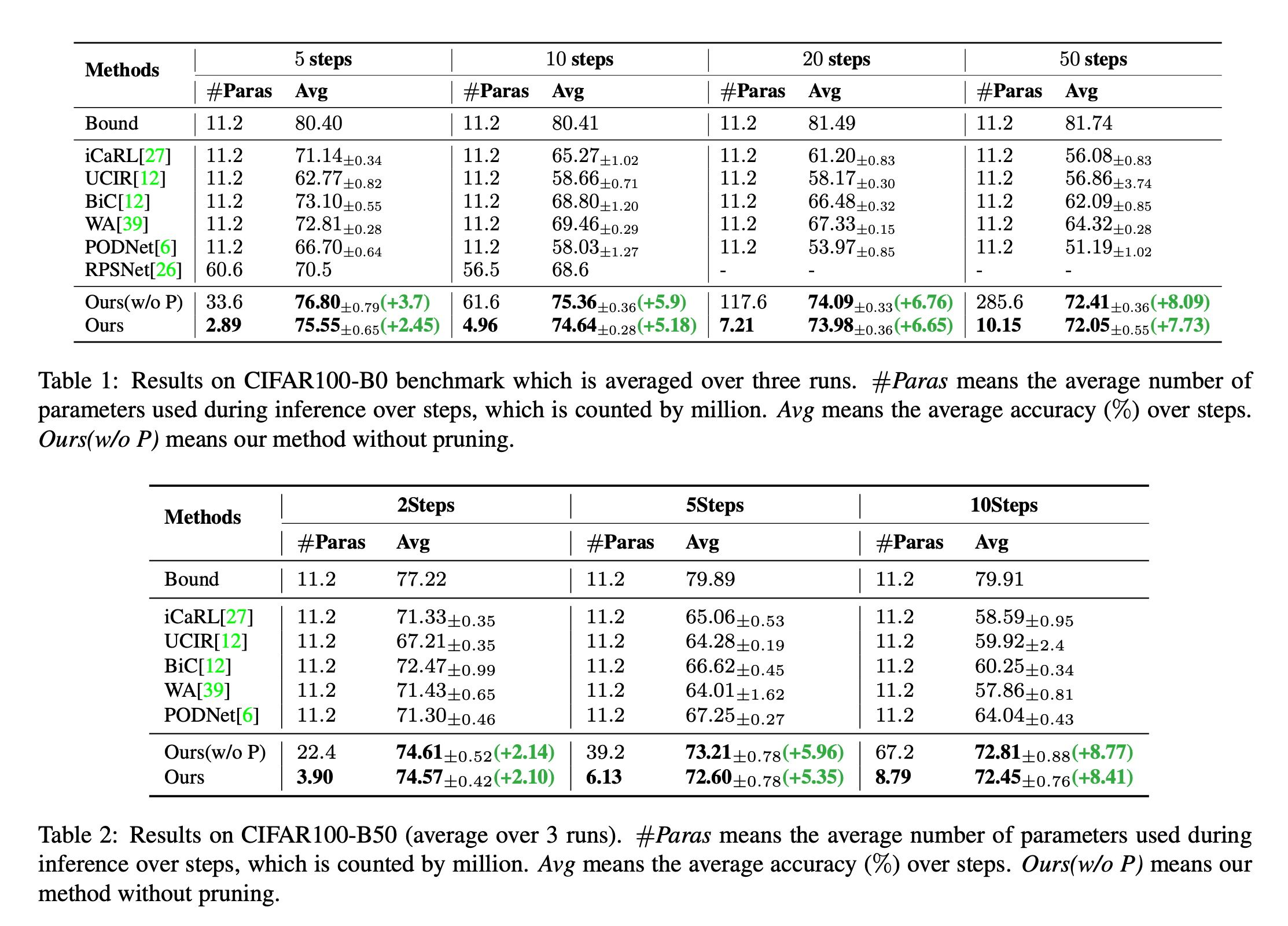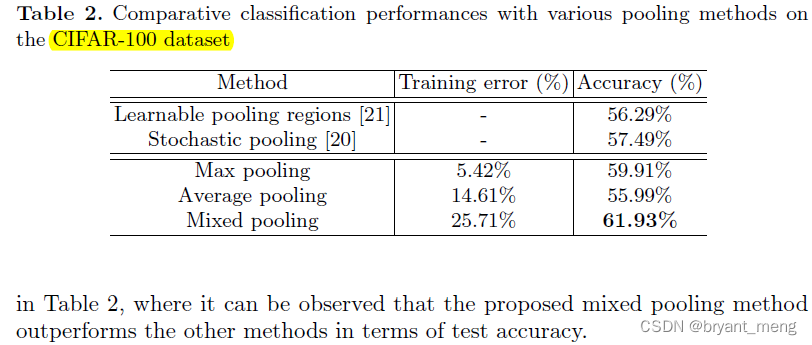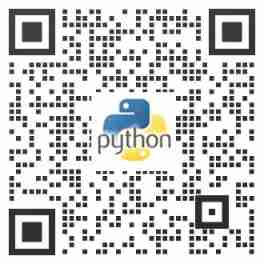当前位置:网站首页>Dynamic extensible representation for category incremental learning -- der
Dynamic extensible representation for category incremental learning -- der
2022-07-02 07:58:00 【MezereonXP】
Dynamic extensible representation for category incremental learning – DER
List of articles
This time, we introduce a training method similar to representation learning , For incremental learning of categories , From CVPR2021 An article from "DER: Dynamically Expandable Representation for Class Incremental Learning".
First , We need to add some pre concepts , Such as category incremental learning and representation learning .
Category incremental learning
In traditional classification learning , We usually have all categories when we train , When testing, it also tests all kinds of data .
In the real world , We often don't define all categories at the beginning , And collect all the corresponding data , The reality is that , We usually have some categories of data , Then train a classifier first , Wait until there is a new category , Then make adjustments to the network structure , Conduct data collection again 、 Training and testing .
Representational learning / Measure learning
Representational learning (Representation Learning), Or measure learning (Metric Learning), Its purpose is to , Learn a representation of data ( Usually in the form of a vector ), Make the representation of the same kind close , The representation of dissimilarity is far away , The distance here can be Euclidean distance, etc .
When doing category incremental learning , We can often reuse the previously trained representation extractor , Tune on new data (fine-tune).
here , The article divides representation learning into 3 class :
- Regularization based method
- Distillation based method
- Structure based approach
Regularization based methods generally have a strong assumption , It is mainly based on the estimation method , Fine tune the parameters .
Distillation based methods depend on the quantity and quality of the data used .
Structure based approach , Additional new parameters will be introduced , Used to model new categories of data .
The above classification is actually insufficient , If you use traditional measurement learning to learn a “ front end ”, To extract features , Then fine tuning the back-end classifier is also a method , But this article doesn't seem to discuss this method .
The basic flow

As shown in the figure above , In fact, it is a process of feature splicing , First , We use some categories of data for training , Get a feature extractor Φ t − 1 \Phi_{t-1} Φt−1, For a new feature F t \mathcal{F}_t Ft , Given a picture x ∈ D ~ t x\in \tilde{\mathcal{D}}_t x∈D~t , The features after splicing can be expressed as :
u = Φ t ( x ) = [ Φ t − 1 ( x ) , F t ( x ) ] u = \Phi_{t}(x)=[\Phi_{t-1}(x), \mathcal{F}_t(x)] u=Φt(x)=[Φt−1(x),Ft(x)]
Then the feature will be input into a classifier H t \mathcal{H}_t Ht On , Output is :
p H t ( y ∣ x ) = S o f t m a x ( H t ( u ) ) p_{\mathcal{H}_t}(y|x)=Softmax(\mathcal{H}_t(u)) pHt(y∣x)=Softmax(Ht(u))
The predicted result is :
y ^ = arg max p H t ( y ∣ x ) \hat{y} = \arg\max p_{\mathcal{H}_t}(y|x) y^=argmaxpHt(y∣x)
therefore , The basic training error is simple cross entropy error :
L H t = − 1 ∣ D ~ t ∣ ∑ i = 1 ∣ D ~ t ∣ log ( p H t ( y = y i ∣ x i ) ) \mathcal{L}_{\mathcal{H}_t}=-\frac{1}{|\tilde{\mathcal{D}}_t|}\sum_{i=1}^{|\tilde{\mathcal{D}}_t|}\log(p_{\mathcal{H}_t}(y=y_i|x_i)) LHt=−∣D~t∣1i=1∑∣D~t∣log(pHt(y=yi∣xi))
We will classify H t \mathcal{H}_t Ht Replace with a classifier for the new category feature H a \mathcal{H}_a Ha , You can get an error for the characteristics of the new category L H a \mathcal{L}_{\mathcal{H}_a} LHa
The error form of fusion is ;
L E R = L H t + λ a L H a \mathcal{L}_{ER} = \mathcal{L}_{\mathcal{H}_t} + \lambda_a\mathcal{L}_{\mathcal{H}_a} LER=LHt+λaLHa
In order to reduce the parameter increment caused by category increment , Here a kind of Mask Mechanism , That is to learn one Mask, For the channel Mask, Use a variable e l e_l el Control .
f l ′ = f l ⊙ m l m l = σ ( s e l ) f_l'=f_l\odot m_l\\ m_l=\sigma(se_l) fl′=fl⊙mlml=σ(sel)
among σ ( ⋅ ) \sigma(\cdot) σ(⋅) Express sigmoid Activation function , s s s Is a scaling factor .
Introduce a sparsity error , It is used to encourage the model to compress parameters as much as possible ,Mask Drop more channels :
L S = ∑ l = 1 L K l ∣ ∣ m l − 1 ∣ ∣ 1 ∣ ∣ m l ∣ ∣ 1 ∑ l = 1 L K l c l − 1 c l \mathcal{L}_S = \frac{\sum_{l=1}^LK_l||m_{l-1}||_1||m_l||_1}{\sum_{l=1}^LK_lc_{l-1}c_{l}} LS=∑l=1LKlcl−1cl∑l=1LKl∣∣ml−1∣∣1∣∣ml∣∣1
among , L L L Is the number of layers , K l K_l Kl It's No l l l Layer convolution Kernel Size.
Final , Get a comprehensive error expression :
L D E R = L H t + λ a L H t a + λ s L S \mathcal{L}_{DER} = \mathcal{L}_{\mathcal{H}_t} +\lambda_a\mathcal{L}_{\mathcal{H}_t^a} + \lambda_s\mathcal{L}_S LDER=LHt+λaLHta+λsLS
experimental analysis
The first is the setting of data set , Three data sets are used :
- CIFAR-100
- ImageNet-1000
- Imagenet-100
about CIFAR-100 Of 100 class , Will be based on 5,10,20,50 Incremental processes to train . here , about 5 Incremental processes , That is, it will increase every time 20 Class new category data . Such a data set segmentation method is recorded as CIFAR100-B0.
Another incremental method is , First in 50 Training on class , And then the rest 50 class , according to 2、5、10 An incremental process for training . Write it down as CIFAR100-B50.
We only give here CIFAR-100 Result of dataset , More detailed , You can see the paper .

As shown in the figure above , The final average accuracy of this method is higher than that of other incremental learning methods . It should be noted that , When using Mask The mechanism is , That is to use Mask The result of is to cut the parameters , The parameters of the obtained model are greatly reduced , The accuracy can still be maintained .
边栏推荐
- How to turn on night mode on laptop
- label propagation 标签传播
- Common machine learning related evaluation indicators
- 【FastDepth】《FastDepth:Fast Monocular Depth Estimation on Embedded Systems》
- E-R画图明确内容
- Eklavya -- infer the parameters of functions in binary files using neural network
- 【AutoAugment】《AutoAugment:Learning Augmentation Policies from Data》
- Use Baidu network disk to upload data to the server
- 【Paper Reading】
- 【学习笔记】Matlab自编高斯平滑器+Sobel算子求导
猜你喜欢

【Mixed Pooling】《Mixed Pooling for Convolutional Neural Networks》

【FastDepth】《FastDepth:Fast Monocular Depth Estimation on Embedded Systems》

【Sparse-to-Dense】《Sparse-to-Dense:Depth Prediction from Sparse Depth Samples and a Single Image》

图像增强的几个方法以及Matlab代码

【雙目視覺】雙目矯正

包图画法注意规范

Label propagation
![Open3d learning note 5 [rgbd fusion]](/img/0a/41d38e4b0295b6674143f3f74a4a8d.png)
Open3d learning note 5 [rgbd fusion]

Income in the first month of naked resignation

Where do you find the materials for those articles that have read 10000?
随机推荐
【Mixed Pooling】《Mixed Pooling for Convolutional Neural Networks》
In the era of short video, how to ensure that works are more popular?
利用超球嵌入来增强对抗训练
【Paper Reading】
服务器的内网可以访问,外网却不能访问的问题
w10升级至W11系统,黑屏但鼠标与桌面快捷方式能用,如何解决
Command line is too long
E-R draw clear content
Ppt skills
【Paper Reading】
Organigramme des activités
Replace self attention with MLP
Daily practice (19): print binary tree from top to bottom
C#与MySQL数据库连接
Translation of the paper "written mathematical expression recognition with bidirectionally trained transformer"
【Random Erasing】《Random Erasing Data Augmentation》
【C#笔记】winform中保存DataGridView中的数据为Excel和CSV
论文写作tip2
AR system summary harvest
Machine learning theory learning: perceptron